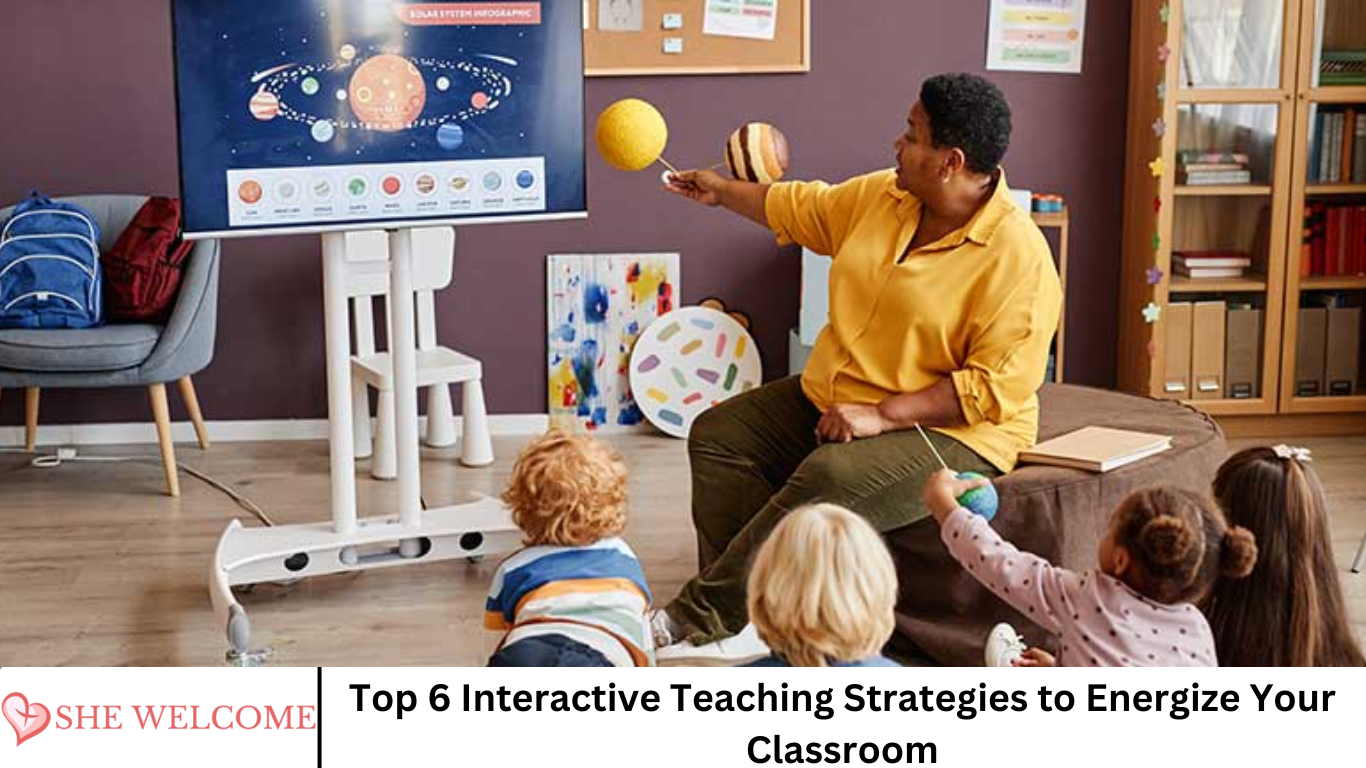Fast-paced educational landscape, traditional teaching methods are giving way to more dynamic and engaging approaches. Educators around the globe are discovering that interactive teaching strategies not only captivate students’ attention but also improve learning outcomes, foster collaboration, and cultivate critical thinking skills.
Whether you teach elementary school or college-level courses, incorporating interactivity into your lessons can make a profound difference. In this comprehensive guide, we will explore the top six interactive teaching strategies that can energize your classroom and keep your students actively involved in their learning journey.
More Read: 10 Key Skills Every Future-Proof Organization Needs, According to the World Economic Forum
1. Think-Pair-Share
What is it? Think-Pair-Share is a cooperative learning technique where students think individually about a question or topic, pair up to discuss their thoughts, and then share their insights with the larger group.
Why it works:
- Encourages active participation
- Builds communication skills
- Reinforces understanding through peer discussion
How to implement:
- Pose a thought-provoking question to the class.
- Give students a minute or two to reflect and jot down their ideas.
- Ask them to pair up and discuss their thoughts.
- Invite pairs to share their conclusions with the whole class.
Pro Tip: Use a timer and walk around the classroom to facilitate discussions and support quieter students.
2. Gamification and Game-Based Learning
What is it? Gamification involves incorporating game-like elements (points, badges, leaderboards) into non-game contexts, while game-based learning uses actual games to teach content.
Why it works:
- Increases motivation and engagement
- Offers instant feedback and rewards
- Makes learning fun and memorable
How to implement:
- Use platforms like Kahoot!, Quizizz, or Classcraft for quizzes and reviews.
- Design your own classroom challenges with point systems and rewards.
- Incorporate educational video games relevant to your subject matter.
Pro Tip: Align game content with your learning objectives to ensure educational value.
3. Project-Based Learning (PBL)
What is it? Project-Based Learning involves students working on a project over an extended period of time that requires problem-solving, critical thinking, and collaboration.
Why it works:
- Promotes deep understanding of content
- Encourages student ownership of learning
- Develops real-world skills
How to implement:
- Introduce a complex, real-world problem related to your curriculum.
- Let students choose how to approach and solve the problem.
- Allow time for research, collaboration, and creation.
- Facilitate presentations and peer evaluations.
Pro Tip: Set clear goals and milestones to guide student progress and keep them on track.
4. Interactive Technology Integration
What is it? Using technology tools and platforms that allow students to interact, collaborate, and contribute in real-time during lessons.
Why it works:
- Enhances digital literacy
- Provides diverse ways to express understanding
- Appeals to tech-savvy learners
How to implement:
- Use tools like Google Workspace, Padlet, and Nearpod for collaborative assignments.
- Incorporate interactive whiteboards and smart devices.
- Create multimedia presentations and encourage student contributions.
Pro Tip: Provide guidance and training on the tools to ensure effective usage.
5. Role Playing and Simulations
What is it? Role-playing and simulations involve students assuming roles or acting out scenarios to better understand concepts or historical events.
Why it works:
- Enhances empathy and perspective-taking
- Brings abstract concepts to life
- Encourages active learning and participation
How to implement:
- Design scenarios related to your subject (e.g., mock trials, historical reenactments, business negotiations).
- Assign roles and provide background information.
- Allow time for preparation and debrief after the activity.
Pro Tip: Debriefing is crucial. Discuss what students learned and how they felt during the simulation.
6. Flipped Classroom Model
What is it? In a flipped classroom, students review instructional content at home (videos, readings) and use class time for interactive activities and deeper exploration.
Why it works:
- Maximizes in-class engagement
- Encourages self-paced learning
- Shifts focus from teacher-led to student-centered learning
How to implement:
- Create or curate engaging instructional materials.
- Assign these materials as homework.
- Use class time for discussions, group work, and hands-on activities.
Pro Tip: Start with a single flipped lesson to introduce the concept and gather feedback.
Frequently Asked Question
What are interactive teaching strategies?
Interactive teaching strategies are instructional methods that actively involve students in the learning process. These strategies promote student participation, collaboration, and critical thinking through activities like group discussions, hands-on projects, and technology integration.
How do interactive teaching strategies benefit students?
They increase student engagement, improve retention, encourage deeper understanding, and foster essential skills such as communication, teamwork, and problem-solving. These strategies also cater to diverse learning styles, making lessons more inclusive.
Are these strategies suitable for all grade levels?
Yes, the strategies can be adapted to fit any educational level—from elementary to higher education. For example, Think-Pair-Share works well with young learners, while Project-Based Learning and flipped classrooms are ideal for older students.
How much preparation time do these methods require?
Some strategies, like Think-Pair-Share or using Kahoot!, require minimal preparation, while others—such as Project-Based Learning or role-playing—need more planning. Starting with simpler methods can ease the transition into more complex ones.
Can these strategies be used in online or hybrid classrooms?
Absolutely. Tools like Google Workspace, Padlet, Zoom breakout rooms, and learning platforms such as Nearpod or Quizizz make it easy to implement interactive strategies in virtual or hybrid environments.
What challenges might teachers face when using these strategies?
Common challenges include time constraints, managing classroom dynamics, and ensuring all students are equally involved. These can be mitigated with clear instructions, structured activities, and periodic feedback.
How do I know which strategy to start with?
Begin with your lesson objectives and student needs. If you’re looking to improve participation, try Think-Pair-Share. For deeper content exploration, consider Project-Based Learning. Experiment and gather student feedback to find the best fit.
Conclusion
Interactive teaching strategies are more than just trendy alternatives to lectures; they are powerful methods grounded in educational research and psychology. By making learning more participatory and student-centered, these strategies can significantly boost engagement, comprehension, and retention. Whether you start small with Think-Pair-Share or go all-in with Project-Based Learning, each of these methods offers unique benefits that can transform your teaching and energize your classroom.


